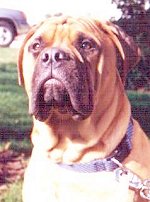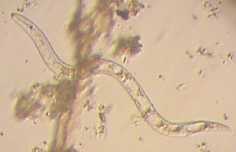
|
Within the phylum nematoda, there have been many adaptations that parasitic worms in plants and animals have gone through in order to keep evolving. Looking more specifically at Dirofilaria immitis, there have been a couple main adaptations that have helped it to evolve. One of the adaptations is the pseudocoelom, which is also found in other nematodes. Pseudocoelomates have a body cavity that is partially lined with mesoderm. The coelom creates a space for circulation and internal organs. Dirofilaria immitis, along with other nematodes, move not with limbs or fins, rather a hydrostatic skeleton. The hydrostatic skeleton is a fluid filled chamber that allows the organism to move by changing the shape of the fluid filled cavity. Coordinated muscle contractions allow one side of the muscles to contract, thus changing the shape of the fluid filled chamber and allowing the nematode to bend and move. This is an excellent way to move without having to expend a lot of energy.
Every organism must have a way to sense things and react to certain stimuli in their environment. Being a nematode, Dirofilaria immitis has a dorsal nerve cord that runs from the nerve ganglion, the central point where all the nerves come together, to almost the posterior end of the worm. Dirofilaria immitis uses the nerve ganglion and the dorsal nerve cord as a sensory organ to find food and give the organism direction as to where it is in its environment. Above:This picture was taken from Wikipedia.org and was released into the public domain by its author Josh Grosse. Another very important adaptation in Dirofilaria immitis deals with how it makes its energy anaerobically. In collaborative research done on the identification and analysis of genes expressed in the adult Dirofilaria immitis, researchers proposed that, “adult heartworm likely adapted an anaerobic electron transfer-based energy generation system distinct from the aerobic pathway utilized by its mammalian host (Yin 2006).
Although these are only a couple of the many important adaptations nematodes, more specifically Dirofilaria immitis, have expressed, it is important to remember that species are always evolving over time in accordance with Darwin’s theory on evolution.
|

